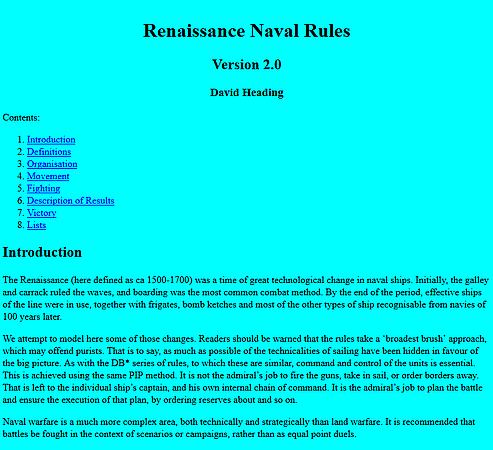
Renaissance Naval Rules
The Renaissance (here defined as ca 1500-1700) was a time of great technological change in naval ships. Initially, the galley and carrack ruled the waves, and boarding was the most common combat method. By the end of the period, effective ships of the line were in use, together with frigates, bomb ketches and most of the other types of ship recognisable from navies of 100 years later.
We attempt to model here some of those changes. Readers should be warned that the rules take a ‘broadest brush’ approach, which may offend purists. That is to say, as much as possible of the technicalities of sailing have been hidden in favour of the big picture. As with the DB* series of rules, to which these are similar, command and control of the units is essential. This is achieved using the same PIP method. It is not the admiral’s job to fire the guns, take in sail, or order borders away. That is left to the individual ship’s captain, and his own internal chain of command. It is the admiral’s job to plan the battle and ensure the execution of that plan, by ordering reserves about and so on.
Naval warfare is a much more complex area, both technically and strategically than land warfare. It is recommended that battles be fought in the context of scenarios or campaigns, rather than as equal point duels.
– introduction
- Designer
- David Heading
- Year Published
- 2002
- Status
- In Print
- Contents
- Archived online (webpage)
Back to RULES DIRECTORY
Areas of InterestRenaissance
Featured Hobby News Article
Featured Link
Top-Rated Ruleset
Featured Showcase Article The next Teutonic Knights unit - Crossbowmen!
Featured Profile Article
|
Editions
Current version is 2.0
|
